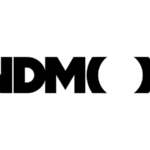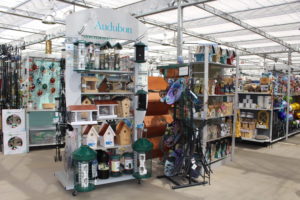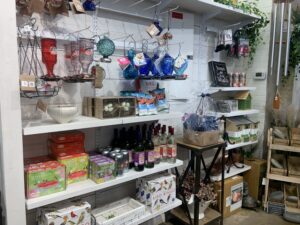Pohmer On…The New Normal
It has been a tough year so far for most retailers. If you are fortunate enough to make your sales dollar plan, you will probably find this resulted more from higher retail price points than from increased customer traffic or moving more units. There is also a high likelihood that your net margins were decreased from last year, as you suffered from higher energy costs, operating expenses, costs of goods and inputs, and more competition for your customers.
While it is no consolation, you are not alone.
New Challenges
All retailers are suffering from the same challenges you are facing, whether they are independents, specialty stores or mass marketers. It is all driven by a new consumer dynamic, a major change in the way they shop and value things. Consumer confidence, both current views and long-term expectations, is beginning to erode. Things looked pretty positive in the fourth quarter of 2005 and the first quarter of 2006 (time periods when lawn and garden products were not exactly high on consumers’ shopping lists).
Over the past few months, we have seen some significant decreases in consumer confidence levels, and this negativity is evidencing itself in reduced spending behavior. As oil broaches $80 a barrel and gas prices exceed $3 per gallon, political unrest in the Middle East increases, the housing bubble appears ready to explode and real wage growth stagnates, it is no wonder the consumer is justifiably concerned about spending, especially on non-essential items.
Consumer Cutbacks
Until recently, the typical consumer could be characterized not as a spendthrift but not exactly as frugal either. She purchased designer-label clothing; was willing to purchase new, name-brand LCD and HDTV sets; and leased upgraded cars. Carrying debt was not a major concern because she had the confidence there would be money readily available to pay for these quasi-luxuries.
But today’s consumer is starting to cut back. She is moving away from the top-name brands to the second and third tier and even no-name or store brands. She is shopping more at the lower-priced category killers and decreasing her buying at the higher-priced specialty stores. Despite the fact that she has to drive further, she is shopping at the supercenter and regular supermarket rather than the more convenient, upscale market she used to frequent.
Research shows that no one major thing is changing her shopping habits and behaviors but a combination of many small things. With all of the uncertainty in her world internationally, nationally, locally and economically there is a bit of pessimism creeping into her life that is acting as a subliminal stimulant for change. She wants to gain some measure of control wherever she can; she wants to get her spending more in line with her reality.
The Changing Consumer
We are seeing an increasingly cautious, anxious and calculatingly price-conscious consumer. We are also seeing a new, more pragmatic mindset evolving, one that is prompting people to focus more on price and shopping within their means. With all of the changes she has experienced in the post 9/11 years, there is an acceptance of “never normal” that is based on a sense of caution about what tomorrow will bring and an understanding that she needs to be prepared to change and react to change in her own life, both self-imposed and forced upon her.
Real spending dollar expenditures are decreasing, but the actual number of shopping trips remains the same. Our consumer is being more deliberate about what she is buying and why. The key point is she is more price conscious and less willing to pay a premium for convenience than before.
Over the past 10-15 years, we saw a trend toward retailer homogenization, a blurring of merchandise and brand assortments in different retail segments (such as discounters and traditional department stores). We also saw shopper democracy, where consumers of all income levels would shop across many different retail channels. In today’s world, we are seeing a growing trend toward income/channel stratification, where consumer income defines where someone shops.
The numerical data and consumer sentiments appear to be telling us the free-spending sensibilities that drove our businesses for the past 10 years or so are running out of steam. With all consumers and retailers facing the same challenges, what can you do to not only survive but thrive?
Learning The Differences
First and foremost, recognize there is a distinct difference between “price conscious” and “value conscious.” Price implies direct comparison to products offered by your competition, while value is an intangible that transcends price (that is not to say price is not an important component of the value statement of perception, but it is not the only component as it is when focused solely on price). For example, your big box competition down the street is probably selling plants and patio sets and focusing on price points, while you can be selling lifestyles, decorating, well being and enjoyment.
While the big box is competing on price, can the consumer really put a comparative price value on the intangibles you offer as long as your retail prices are not totally unrealistic? How you position and communicate your value proposition to consumers to address their real need for benefits, satisfaction, enjoyment and success can truly set you apart from your price competition!
The shopping experience is becoming an integral part of the purchase decision… and the determination on how much is spent when the consumer is in your store. This experience the store layout, lifestyle vignette displays, ambience, service and employees will help position and communicate your value proposition… and help take the focus off of price while creating connections and a sense of intimacy with your customers, something the price-focused retailers cannot replicate.
Next, based on what we are learning about today’s consumer, it is becoming increasingly more difficult to be all things to all people. Now more than ever, it is critical to know who your customer is especially income and age demographics and “gardening intelligence” quotients and focus your products, programs and services to meet the specific needs of this customer.
Developing Trust
Liebmann stated in my opening quote that, “It’s all about building trust, every day.” You cannot buy or sell trust; it is something that has to be earned. Much like a brand, trust is the end result of consistent performance that meets or exceeds expectations over time. It is not easy to build a trusting relationship, but if you are successful at doing so, the benefits are absolutely awesome. Trust breeds loyalty and loyal customers become your best ambassadors, communicating your values to their friends, a form of advertising you simply cannot buy. And it is a fact that customers who trust you and are loyal to you spend more per visit and shop more frequently.
So, you are challenged with an economy that is not necessarily heading in the right direction and a consumer who is increasingly skittish about her future one who is trying to get her spending more in line with her reality and becoming more discerning in what she buys and where and why she buys it. You have two choices… focus on price to appeal to her price consciousness and compete against the boxes, a battle you have only a small chance of winning. Or position your image, programs, products, services and store experience to a targeted consumer base where you have the opportunity to appeal to their deep-seated needs and build trust and loyalty through consistent execution.
Remember, focus on things that are meaningful to your customer and cannot be easily replicated by your competition.
It will not be easy to do, but do you really have a choice if you want to survive… and thrive?

















 Videos
Videos





